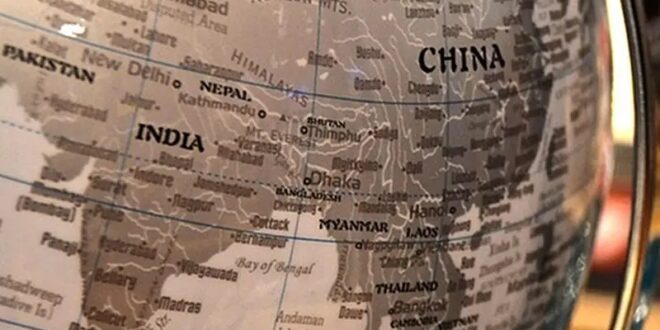Due to the geostrategic significance, geographical certainty, intricate para dynamics and strategic problems, the value of the Indo-Pacific region can’t be overemphasised. India’s escalating economic and military prowess allows its dominance in this maritime region. However, India’s aggressiveness in the Indo-Pacific region is not without risks and consequences, especially when viewed in regional rivalries and geopolitical tensions. This piece focuses on studying India’s growing role in the Indo-Pacific region, attendant strategic challenges, neighbouring countries’ relations, and its impact on regional stability.
India’s foreign policy has been transformed considerably, as a result of historical events, geopolitical imperatives, and changing world dynamics. From its inception when it became an independent country, India has been pushing for the principles of non-alignment to retain its autonomy and independence in foreign relations. Contrarily, however, geopolitics has forced India to adopt a more cautious approach, which is characterised by bandwagoning in different alliances and strategic partnerships.
The Rise of China and Shifting Power Dynamics
China’s rise as a global economic and military powerhouse has affected the geopolitical landscape of the Indo-Pacific region. The rising influence of China in South Asia, the Belt and Road Initiative (BRI), and growing military abilities have alarmed the regional players, especially India. In response, India has started to join various economic and military partnerships with the United States and its allies to counter China’s heft.
The expanding strategic partnership between India and the United States, has become the main driver of Indian foreign policy in the Indo-Pacific. The two countries have made their defence cooperation stronger through numerous agreements and initiatives, among which the Quadrilateral Security Dialogue (QUAD) and the signing of foundational agreements like the General Security of Military Information Agreement (GSOMIA), Communications Compatibility and Security Agreement (COMCASA), Logistics Exchange Memorandum of Agreement (LEMOA) and most recently Basic Exchange and Cooperation Agreement (BECA) are the most notable ones. GSOMIA, LEMDA, BECA and COMCASA are foundational agreements that the US does with any ally or close partner to facilitate cooperation between militaries and high-end technology. Although this bond has improved India’s security capabilities, it has also caused concerns about the country’s possible involvement in regional conflicts and surge in hostilities.
The “Necklace of Diamonds” Strategy and Regional Dynamics
India’s “Necklace of Diamonds” policy, aimed at creating strategic ties and military outposts throughout the Indian Ocean area, has generated worries among neighbouring countries, notably Pakistan. This strategy is aimed at gaining strategic access to line a necklace of diamonds surrounding China in a counter-circular node. The militarisation of the region through ports (Changi Naval Base – RSS Singapura, Sabang Port Indonesia, Durban Port Oman, Assomption Island Seychelles and Chabahar Port Iran), along with India’s maritime ambitions, has stoked apprehensions about a potential arms race and escalation of hostilities.
Moreover, India is growing strategic cooperation with Mongolia, Japan, Vietnam and Central Asian Republics (CARs). To assist these ventures India is trying to make its navy self-sufficient by 2047. Indian Navy has envisioned an ambitious plan to create a 175-ship force by 2035. 41 of the 43 ships under construction are built in an Indian shipyard, with a proposal to build 49 more ships and submarines in the approved timeline. Pakistan sees India’s attempts to achieve supremacy in the Indian Ocean as a direct threat to its security and sovereignty.
The long-standing rivalry between India and Pakistan, rooted in historical animosities and territorial disputes, has been exacerbated by India’s maritime ambitions and strategic alignments. According to Pakistan, India’s assertive role in the Indo-Pacific poses a threat to its security interests and regional influence.
However, neither India nor Pakistan want to be mere puppets in the great power conflict that now dominates the world scene. Islamabad’s steadfast refusal to be dragged into bloc politics demonstrates its commitment to retaining relative independence in foreign relations. Similarly, India is also exercising caution in identifying too closely with the United States, preserving its historic posture of strategic autonomy in the face of growing collaboration. While the US and China may not aim to worsen India-Pakistan security competition, existing policies may accidentally deepen it.
The India-Pakistan rivalry, while diverse, is increasingly impacted by the larger geopolitical conflict between the United States and China, resulting in a hazardous accumulation of weapons and increased security concerns in the area. To counter these threats, the major powers must take a cooperative approach towards South Asia and the Indo-Pacific, encouraging communication and collaboration rather than promoting zero-sum measures.
Initiatives such as the United States’ transfer of F-16 aircraft components to Pakistan are significant moves towards de-escalation and improving relations between the US and Pakistan. India and China should also explore opportunities for economic cooperation to further promote regional peace. However, making remarkable progress would need a fundamental change away from hostile attitudes and dedication to tackling shared security concerns via constructive engagement and mutual respect.
Conclusion
India’s proactive engagement in the Indo-Pacific marks a fundamental shift in its foreign policy strategy, owing to changing geopolitical factors and strategic imperatives. While India’s growing collaborations and strategic alignments have strengthened its security capabilities and regional influence, they have also raised worries about the risk of instability and conflict. As India navigates the Indo-Pacific’s complicated terrain, it must prioritise regional peace, stability, and development. Only by constructive engagement, mutual respect and a less assertive role can India and its regional partners create a more sustainable and resilient Indo-Pacific future.
 Eurasia Press & News
Eurasia Press & News



